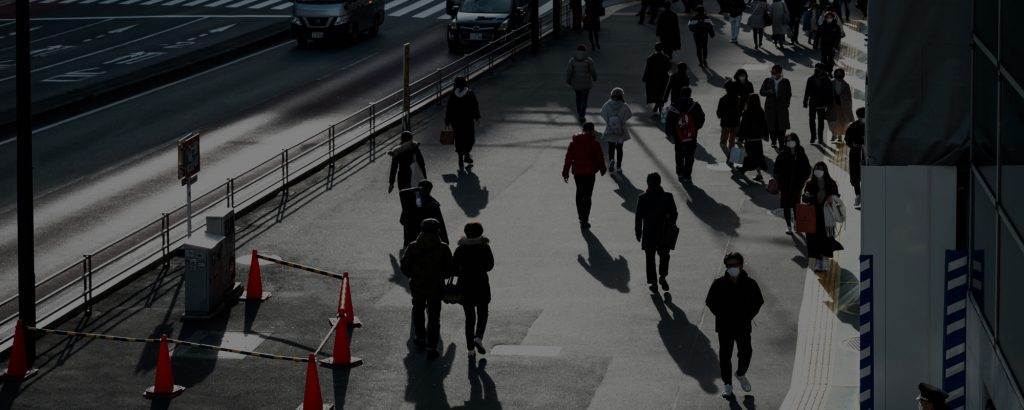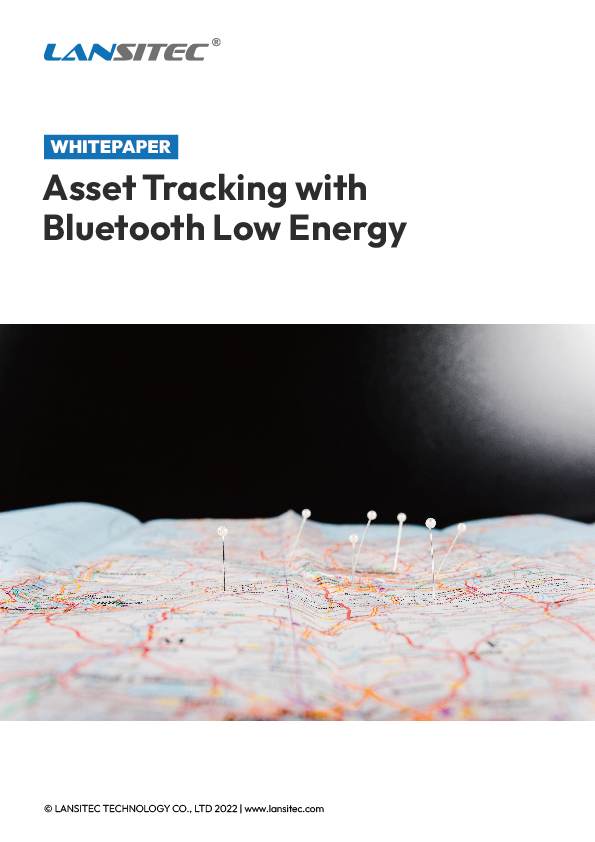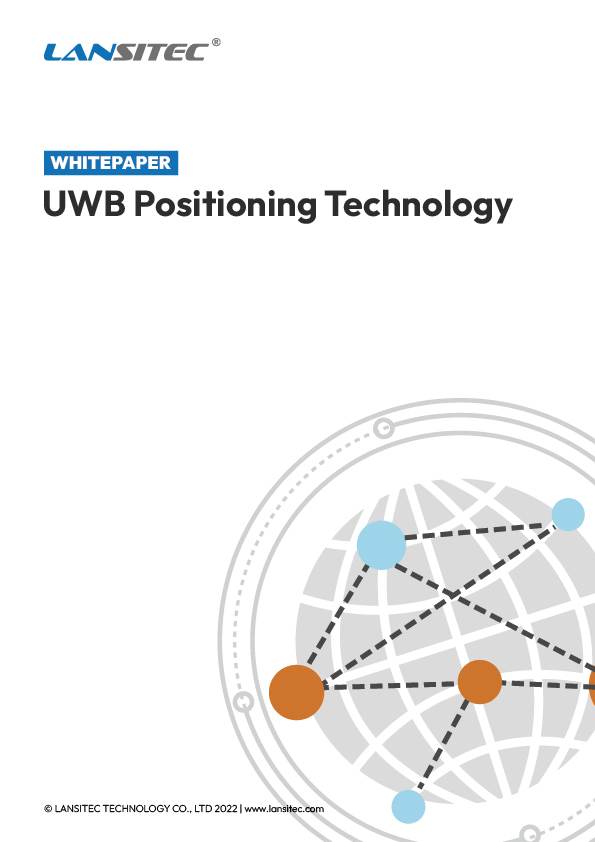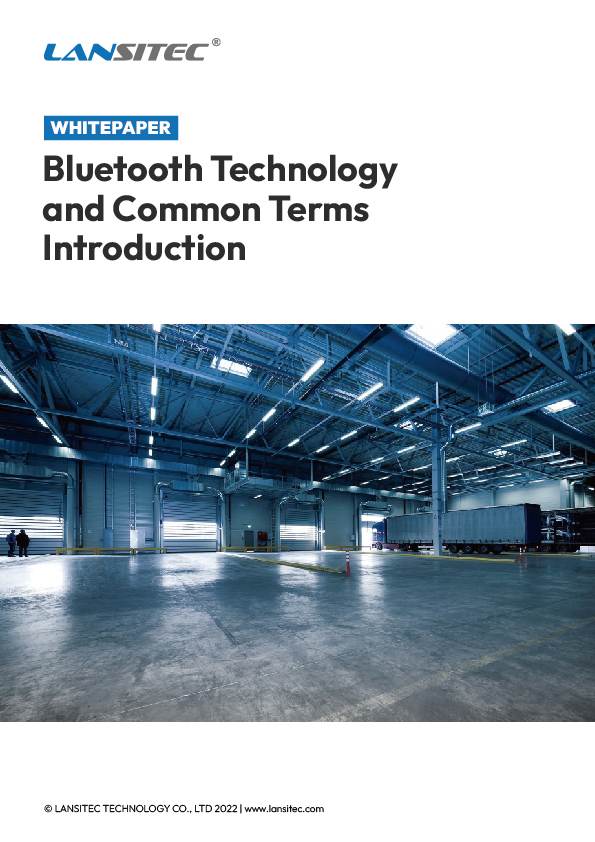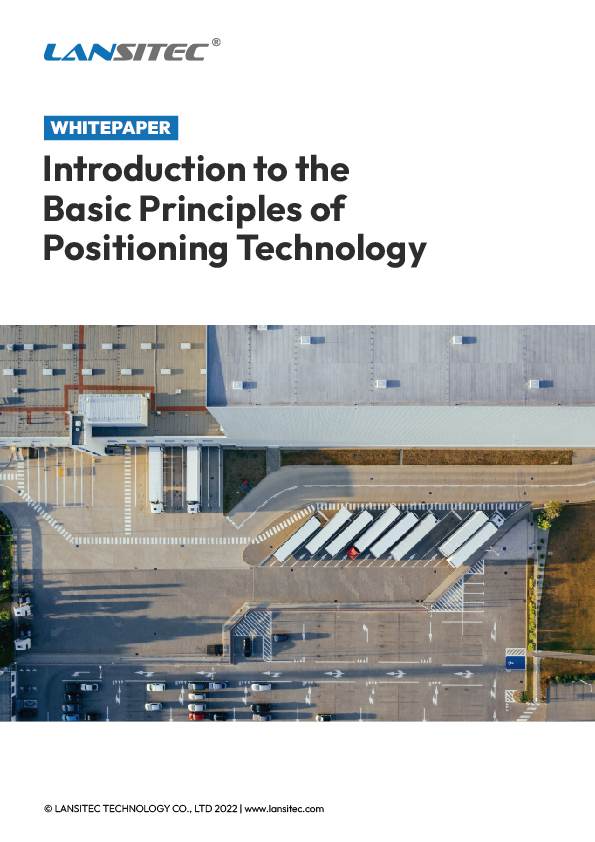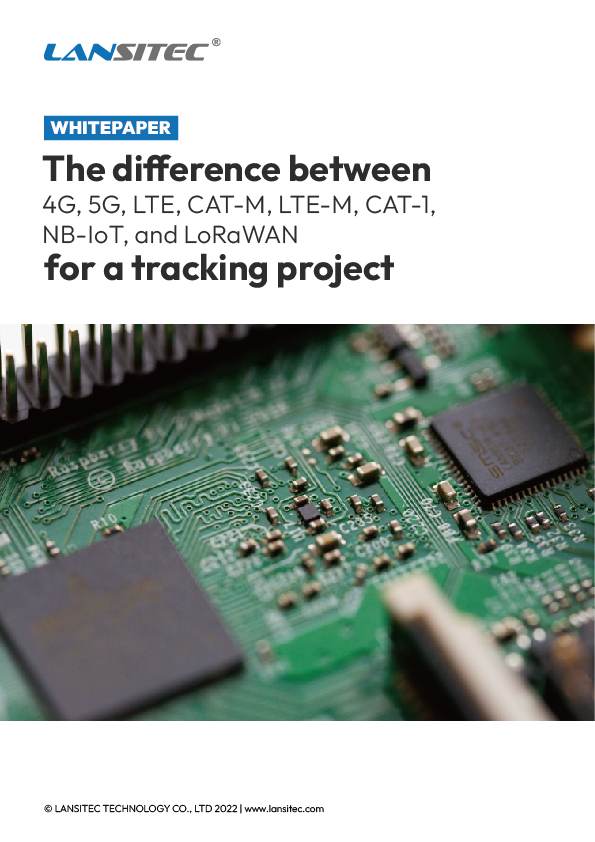I. Introducción
El panorama de la gestión de eventos a gran escala, en rápida evolución, en particular en el contexto de protocolos de salud y seguridad como el distanciamiento social, requiere soluciones tecnológicas innovadoras. estudio de caso explora la utilización de la Insignia de rastreo de contactos de Lansitec, un dispositivo que aprovecha la tecnología más avanzada Bluetooth 5.0 y tecnologías LoRaWAN, en el ámbito de la gestión de eventos, el control de multitudes y el cumplimiento del distanciamiento social.
La insignia Lansitec está diseñada para garantizar una funcionalidad óptima en diversos entornos, caracterizándose por su robustez. Seguimiento en interiores Precisión, capacidades de comunicación a larga distancia y funciones fáciles de usar como geofencing y bajo consumo de energía. Este estudio plantea la hipótesis de la aplicación de la credencial en un gran evento, examinando su potencial para mejorar la seguridad de los asistentes, agilizar la gestión de multitudes y garantizar el cumplimiento de las pautas de distanciamiento social.
A través de este estudio, pretendemos evaluar teóricamente las capacidades de la credencial en el monitoreo en tiempo real de la densidad de multitudes, la detección de proximidad entre asistentes y la gestión eficiente de espacios para eventos. El objetivo es explorar cómo sus tecnologías integradas (en particular, la combinación de Bluetooth para comunicación de corto alcance y LoRaWAN para una cobertura de área más amplia) pueden aprovecharse para mantener los estándares de seguridad sin comprometer la experiencia del evento.
II. Panorama tecnológico
Aprovechamiento de Bluetooth 5.0 y LoRaWAN
El Lansitec Insignia de rastreo de contactos, piedra angular de este estudio de caso teórico, es una solución tecnológica avanzada diseñada para el seguimiento preciso en interiores y el rastreo eficaz de contactos, especialmente relevante en el contexto de la gestión de eventos a gran escala. En esencia, la insignia aprovecha dos tecnologías inalámbricas fundamentales: Bluetooth 5.0 y LoRaWAN.
- Bluetooth 5.0: Esta insignia incorpora Bluetooth 5.0, una mejora significativa respecto a sus predecesores en la serie de tecnología Bluetooth. Bluetooth 5.0 Es reconocido por su amplio alcance, mayor capacidad de transmisión de datos y mejor interoperabilidad con otras tecnologías inalámbricas. En el contexto de la insignia Lansitec, Bluetooth 5.0 Facilita el seguimiento preciso en interiores con una precisión de 2 a 3 metros. Esta precisión es crucial para una detección de proximidad eficaz en situaciones de gran afluencia de público, como las que se dan en eventos. Además, la credencial utiliza Bluetooth 5.0 para Sistemas de Localización en Tiempo Real (RTLS), que ofrece un seguimiento preciso y en tiempo real de los portadores de credenciales dentro de las instalaciones del evento. El alcance mejorado (hasta 25 metros de línea de visión) y la capacidad de transmitir datos más completos y complejos hacen... Bluetooth 5.0 Una opción ideal para gestionar las interacciones y los movimientos de los asistentes.
- LoRaWAN (red de área amplia de largo alcance): Complementando Bluetooth 5.0, La credencial Lansitec está equipada con tecnología LoRaWAN. LoRaWAN es un protocolo diseñado para la comunicación inalámbrica de datos de largo alcance, lo que la hace especialmente adecuada para cubrir espacios para eventos de gran tamaño donde la conectividad Wi-Fi o celular tradicional puede fallar. Las fortalezas de LoRaWAN residen en su amplio alcance (más de 1 km en zonas urbanas) y su excepcional penetración en entornos densos u obstructivos, lo que garantiza la conectividad incluso en escenarios difíciles. La credencial utiliza el protocolo LoRaWAN versión 1.0.2B, compatible con diversas bandas de frecuencia para satisfacer las necesidades regionales. Esta tecnología es fundamental para ampliar el alcance del sistema de seguimiento más allá de las limitaciones del Bluetooth, lo que permite una cobertura completa para monitorear los movimientos e interacciones de la multitud en un amplio recinto para eventos. La alta sensibilidad del receptor LoRa de la credencial (de -139 dBm a -137 dBm, según la frecuencia) garantiza la detección de incluso las señales más débiles, mejorando así la fiabilidad del sistema de seguimiento.
Juntos, Bluetooth 5.0 y LoRaWAN en el Insignia de Lansitec Proporcionan un enfoque de doble capa para el seguimiento y la supervisión. Mientras que Bluetooth ofrece precisión y facilidad de uso en espacios más pequeños y confinados, LoRaWAN extiende la utilidad de la credencial a entornos de eventos más grandes y complejos. Esta combinación garantiza que se pueda realizar un seguimiento preciso y confiable de los asistentes en todo el espacio del evento, lo que contribuye significativamente a la gestión eficaz de las multitudes y al cumplimiento de los protocolos de distanciamiento social.
Detección de proximidad, rastreo de contactos y sistemas de alerta
La insignia de rastreo de contactos de Lansitec, integrada con tecnología avanzada Bluetooth 5.0 y las tecnologías LoRaWAN, sirven como una herramienta multifacética para la detección de proximidad, el rastreo de contactos y la implementación de sistemas de alerta en el contexto de la gestión de eventos. Esta sección profundiza en la mecánica operativa de estas funciones, fundamentales para la funcionalidad de la insignia.
- Detección de proximidad:La insignia utiliza BLE (Bluetooth de bajo consumo) tecnología para la detección de proximidad. Esto se logra principalmente mediante el uso de valores RSSI (Indicador de Intensidad de la Señal Recibida), que miden la potencia presente en una señal de radio recibida. Los valores RSSI se utilizan para estimar la distancia entre las credenciales, lo que permite detectar la proximidad dentro de un umbral predefinido, generalmente establecido en unos 2 metros por defecto, pero ajustable según los requisitos del evento. Cuando dos credenciales se encuentran dentro de este límite de proximidad, registran su presencia, rastreando eficazmente las interacciones cercanas entre los asistentes.
- Rastreo de contactos:En el contexto del rastreo de contactos, la credencial registra las interacciones que ocurren dentro del rango de proximidad predefinido. Estos datos, que incluyen la duración y la frecuencia de las interacciones, se almacenan en la memoria de la credencial. Mediante la conectividad Bluetooth, estos datos se pueden transmitir a un servidor central o se puede acceder a ellos a través de una aplicación móvil para su análisis. En un escenario de evento teórico, esta función permite a los organizadores del evento rastrear y analizar patrones de interacciones de los asistentes, lo que es crucial para identificar posibles áreas de alta densidad y grupos de contactos. En el caso de un incidente relacionado con la salud, estos datos se vuelven invaluables para rastrear posibles cadenas de transmisión.
- Sistemas de alerta:La credencial está equipada con un zumbador y un vibrador integrados, que son parte integral de su sistema de alerta. Estos componentes se activan cuando la credencial detecta otra credencial dentro del límite de proximidad establecido, lo que sirve como recordatorio táctil y auditivo para mantener el distanciamiento social. El zumbador produce una alerta audible a 75 dB, mientras que el vibrador proporciona una alerta física con menos de 50 dB de ruido mecánico, lo que garantiza que los recordatorios sean perceptibles pero no demasiado molestos. Este sistema de alerta dual es particularmente eficaz en entornos de eventos ruidosos y concurridos, donde las señales visuales pueden pasar desapercibidas.
Además, la funcionalidad NFC (Near Field Communication) de la insignia permite una fácil gestión y configuración de estas funciones, lo que permite a los organizadores de eventos ajustar rápidamente configuraciones como umbrales de proximidad o tipos de alerta para alinearlos con los requisitos cambiantes o las diferentes áreas dentro del lugar del evento.
En resumen, la credencial de rastreo de contactos de Lansitec funciona como una herramienta integral para gestionar la dinámica de las multitudes y garantizar los protocolos de seguridad. Su sofisticado uso de Bluetooth para la detección de proximidad y el rastreo de contactos, combinado con un sistema de alerta eficaz, lo convierte en un recurso teóricamente poderoso en cualquier escenario de gestión de eventos a gran escala, donde mantener el distanciamiento social y monitorear las interacciones de los asistentes son primordiales.
III. Marco teórico
Escenarios hipotéticos en situaciones de eventos
Para explorar eficazmente la aplicación de la credencial de rastreo de contactos de Lansitec en el ámbito de la gestión de eventos, es útil considerar varios escenarios hipotéticos. Estos escenarios ayudan a comprender los desafíos y las oportunidades prácticas que dicha tecnología podría enfrentar en situaciones del mundo real.
- Festival de música:Imagínese un gran festival de música al aire libre con varios escenarios y miles de asistentes. La credencial podría utilizarse para controlar la densidad de público en varios puntos, alertando a los asistentes cuando ciertas áreas estén demasiado concurridas, lo que ayudará a dispersar a la multitud.
- Conferencia o feria comercial:En un entorno cerrado, como una conferencia, la credencial puede ayudar a rastrear los movimientos de los asistentes a través de diferentes salas y stands. También puede ayudar a gestionar las colas para los discursos de apertura o las exposiciones especiales, garantizando así que se mantenga el distanciamiento social.
- Evento deportivo:En un estadio deportivo, la insignia se puede utilizar para gestionar el flujo de personas que entran y salen del estadio, así como para monitorear la densidad de multitudes en las gradas y áreas comunes como los patios de comidas.
Fundamentos teóricos para el uso de dispositivos IoT en la gestión de multitudes y el distanciamiento social
- Recopilación y análisis de datos en tiempo real:Los dispositivos IoT como la credencial Lansitec permiten la recopilación de datos en tiempo real sobre la ubicación y las interacciones de los asistentes. Estos datos son fundamentales para tomar decisiones informadas sobre la gestión de multitudes, como la identificación y la reducción de puntos de congestión.
- Precisión y exactitud:Tecnologías avanzadas como Bluetooth 5.0 y LoRaWAN garantizan un seguimiento preciso y exacto de las personas dentro de un espacio para eventos. Esta precisión es clave para implementar medidas efectivas de distanciamiento social.
- Respuesta proactiva al hacinamiento:La naturaleza en tiempo real de los dispositivos IoT permite un enfoque proactivo para la gestión de multitudes. Los organizadores pueden responder a posibles problemas antes de que se agraven, como desviar el tráfico peatonal o modificar los horarios de los eventos para dispersar a las multitudes.
- Experiencia mejorada para los asistentes:Al garantizar un entorno seguro, los asistentes pueden tener una experiencia más agradable. El sistema de alerta de la credencial puede recordarles con delicadeza a los asistentes que mantengan la distancia social sin ser intrusivo.
- Escalabilidad y flexibilidadLos dispositivos IoT se pueden ampliar o reducir según el tamaño del evento y se pueden programar para adaptarse a necesidades específicas, lo que los convierte en herramientas versátiles para distintos tipos de eventos.
- Cumplimiento de normas de salud y seguridad basado en datos:En el contexto de una crisis sanitaria como una pandemia, garantizar el cumplimiento de las normas sanitarias es primordial. Los dispositivos IoT proporcionan un enfoque basado en datos para hacer cumplir dichas normas, lo que mejora la seguridad general.
IV. Diseño del estudio de caso
Descripción de un gran evento hipotético
Despliegue teórico de la insignia
Distribución entre los asistentes:
- Al llegar, cada asistente recibe una credencial de rastreo de contactos de Lansitec como parte de su kit de bienvenida. La credencial se registra previamente con la información de su boleto.
- Se informa a los asistentes sobre el propósito de la insignia, principalmente su función para garantizar el distanciamiento social y mejorar la seguridad.
- A los miembros del personal del evento también se les entrega una insignia, ya que generarán otro conjunto de datos que ayudarán con la gestión general del evento y la coordinación del departamento.
Configuración de estaciones de monitoreo:
- Varias estaciones de monitoreo están ubicadas estratégicamente en todo el recinto del festival. Estas estaciones están equipadas con receptores avanzados que se conectan a las credenciales a través de Bluetooth y LoRaWAN.
- Las estaciones recopilan datos en tiempo real de las insignias, como coordenadas de ubicación e interacciones de proximidad.
- Se establece un centro de monitoreo central, donde se agregan y analizan los datos de todas las estaciones.
Integración con sistemas de gestión de eventos:
- El sistema de acreditaciones está integrado con el software de gestión de eventos del festival. Esta integración permite obtener información en tiempo real sobre la dinámica de la multitud y los movimientos de los asistentes.
- El equipo de gestión de eventos utiliza estos datos para tomar decisiones informadas, como ajustes en el flujo de multitudes, cambios de programación o respuestas de emergencia.
- Los datos de la insignia ayudan a gestionar recursos de manera eficiente, por ejemplo, dirigiendo al personal de seguridad a áreas de alta densidad o riesgo potencial.
Funciones adicionales para una experiencia mejorada:
- La insignia también sirve como billetera digital para transacciones sin efectivo en el festival, agilizando las compras y reduciendo los tiempos de espera.
- Los asistentes pueden optar por recibir notificaciones sobre sus actuaciones favoritas, para asegurarse de no perderse ningún espectáculo mientras mantienen la distancia segura.
Cómo elegir la solución Lansitec adecuada
Para determinar qué solución es más adecuada para el caso de estudio del festival de música HarmonyFest, debemos considerar los requisitos específicos del evento y las capacidades de cada sistema:
- B-Fijo:Esta solución incluye puertas de enlace Bluetooth fijas que serían ideales para ubicaciones estáticas y bien definidas, como escenarios, puestos de comida o entradas. Es eficaz para monitorear zonas específicas y es menos propensa a errores relacionados con la movilidad.
- B-Móvil:Esta solución ofrece balizas móviles Bluetooth, que son más flexibles y dinámicas. Son más adecuadas para rastrear objetos o personas en movimiento en distintas ubicaciones, lo que proporciona una cobertura más amplia y capacidad de adaptación a la dinámica cambiante de las multitudes.
Para un evento como HarmonyFest, donde la movilidad de los asistentes y la cobertura de un área amplia son factores clave, B-Mobile probablemente sería más eficaz. Su adaptabilidad a diferentes escenarios, la capacidad de rastrear a los asistentes en movimiento y su cobertura más amplia lo convierten en una opción más adecuada para entornos de eventos dinámicos. La flexibilidad de la solución B-Mobile para rastrear tanto a las personas como a los activos en toda el área del festival se alinea bien con las necesidades de gestión de un evento dinámico a gran escala como HarmonyFest.
Al incorporar la arquitectura de la solución B-Mobile, el diseño del estudio de caso para HarmonyFest se puede ajustar de la siguiente manera:
- Despliegue dinámico de balizas móviles:Los asistentes al HarmonyFest están equipados con balizas móviles integradas en sus credenciales de Lansitec. Estas balizas transmiten continuamente señales Bluetooth que son captadas por receptores repartidos por todo el recinto del festival.
- Seguimiento de movimiento en tiempo real:La solución B-Mobile permite el seguimiento en tiempo real de los movimientos de los asistentes. Esta función es fundamental para supervisar y gestionar dinámicamente el flujo de público, a medida que los asistentes se desplazan entre escenarios, puestos de comida y otras atracciones.
- Análisis de datos flexible y gestión de multitudes:El flujo continuo de datos de las balizas móviles permite al equipo de gestión de eventos analizar la densidad de la multitud y los patrones de movimiento en tiempo real. Esta información se utiliza para tomar decisiones inmediatas, como desviar el tráfico peatonal o ajustar los horarios de los eventos para evitar aglomeraciones.
- Mayor seguridad y experiencia:Los datos en tiempo real proporcionados por la solución B-Mobile ayudan a mantener los protocolos de distanciamiento social de manera efectiva y garantizan que se cumplan las medidas de seguridad durante todo el evento.
V. Mecanismo de detección y alerta de proximidad
Detección avanzada de proximidad en entornos concurridos
Eficacia de los sistemas de doble alerta
- Alertas audibles:Las insignias emiten un sonido de 75 dB, que es ligeramente más alto que los niveles normales de una conversación. El desafío consiste en garantizar que estas alertas sean audibles en un entorno que suele estar repleto de música y ruido de público. La eficacia dependerá de los niveles de ruido ambiental en las distintas ubicaciones del festival. Por ejemplo, es posible que las alertas deban ser más fuertes cerca de los escenarios con actuaciones en directo en comparación con las zonas más tranquilas, como las zonas de relajación.
- Alertas de vibración:La alerta por vibración complementa la alerta sonora y proporciona una señal táctil. Esto resulta especialmente útil en situaciones en las que la alerta sonora puede quedar ahogada. La eficacia de las alertas por vibración depende de la intensidad de la alerta y de la sensibilidad del usuario a dichas señales. Es una forma discreta pero eficaz de avisar a los asistentes, especialmente en situaciones en las que una alerta sonora puede resultar intrusiva o pasarse por alto.
Integración y experiencia de usuario
VI. Gestión de datos y privacidad
Recopilación y análisis de datos teóricos
En el contexto de HarmonyFest, utilizando la insignia Lansitec, se puede recopilar teóricamente una cantidad significativa de datos, incluidos patrones de movimiento de los asistentes y métricas de densidad de multitudes.
- Patrones de movimiento:Al rastrear los movimientos de los asistentes a través de sus credenciales, el sistema podría generar mapas detallados que muestren las áreas populares, los horarios de mayor movimiento y los caminos más transitados. Estos datos podrían ser invaluables para comprender el comportamiento y las preferencias de los asistentes y para planificar eventos futuros.
- Densidad de multitud:El sistema también podría analizar la concentración de asistentes en las distintas zonas del festival. Estos datos son cruciales para identificar posibles aglomeraciones y tomar decisiones en tiempo real para aliviar la congestión.
Consideraciones sobre la privacidad
- Es fundamental garantizar la privacidad y la seguridad de los datos recopilados. Los datos deben ser anónimos y estar encriptados para proteger la identidad de los asistentes.
- La comunicación clara con los asistentes sobre qué datos se están recopilando, cómo se utilizarán y las medidas implementadas para proteger su privacidad es esencial para la gestión ética de los datos.
- El uso de los datos debe cumplir estrictamente las leyes y regulaciones de protección de datos pertinentes.
Consideraciones éticas
Al manejar los datos recopilados por las insignias de Lansitec en HarmonyFest, se deben abordar varias consideraciones éticas para garantizar la privacidad y la confianza:
- Consentimiento informado:Los asistentes deben estar plenamente informados sobre el proceso de recopilación de datos y deben dar su consentimiento. Esto incluye claridad sobre qué datos se están recopilando, cómo se utilizarán y la duración de su almacenamiento.
- Minimización de datos: Recopile solo los datos necesarios para el propósito previsto, en este caso, para gestionar la densidad de la multitud y garantizar el distanciamiento social. Evite recopilar información personal confidencial a menos que sea absolutamente necesario.
- Anonimización:Los datos deben anonimizarse para evitar la identificación de los asistentes individuales. Esto implica eliminar o cifrar información identificable, como nombres o identificadores personales.
- Almacenamiento y transmisión seguros: Implementar medidas de seguridad sólidas para proteger los datos contra accesos no autorizados o infracciones. Esto incluye métodos de cifrado seguro durante la transmisión y el almacenamiento de datos.
- Cumplimiento de la normativa:Cumplir con las leyes y regulaciones de protección de datos pertinentes, como el RGPD o las leyes de privacidad locales, que establecen estándares para la privacidad de los datos y los derechos de los usuarios.
- Transparencia y rendición de cuentas: Mantener la transparencia en las prácticas de manejo de datos y ser responsable de los procesos de gestión de datos. Esto incluye tener políticas y protocolos claros para el acceso y uso de los datos.
- Eliminación de datos después del evento: Establecer una política clara para la eliminación de datos una vez concluido el evento. Los datos no deben conservarse más tiempo del necesario para el propósito establecido.
VII. Estrategias de control de multitudes
Utilización de datos de credenciales para una gestión eficaz de multitudes
En la aplicación teórica de la insignia Lansitec en HarmonyFest, los datos recopilados desempeñan un papel fundamental en la formulación de estrategias para el control de multitudes. A continuación, se indican algunas estrategias clave que podrían emplearse:
- Monitoreo de densidad de multitudes en tiempo real:Al analizar los datos de ubicación en tiempo real de las credenciales, el equipo de gestión del evento puede monitorear continuamente la densidad de público en las diferentes áreas del festival. Esto permite identificar aglomeraciones e implementar rápidamente medidas para dispersar a la multitud.
- Gestión dinámica de áreas:Utilizar los datos para ajustar el acceso a las distintas partes del festival. Por ejemplo, si una zona del escenario en particular se llena demasiado, se puede restringir temporalmente la entrada y dirigir a los asistentes a zonas menos concurridas.
- Análisis predictivo del flujo de multitudes:Análisis de patrones de movimiento para predecir dónde es probable que se formen multitudes. Esto puede orientar la programación de eventos o la ubicación de atracciones y servicios para distribuir mejor a los asistentes en el lugar.
- Planificación de respuesta a emergencias:En caso de emergencia, los datos de las credenciales pueden resultar muy valiosos para ejecutar los planes de evacuación. Comprender la distribución en tiempo real de la multitud puede ayudar a dirigir a las personas hacia las salidas más cercanas de manera eficiente.
- Ciclo de retroalimentación para la planificación futura:El análisis de los datos posterior al evento puede brindar información para la planificación de eventos futuros, ayudando a optimizar el diseño, la programación y la asignación de recursos para una mejor gestión de las multitudes.
Adaptaciones de la gestión de eventos en tiempo real
- Programación dinámica y anuncios:Utilice datos de credenciales en tiempo real para realizar ajustes inmediatos en la programación. Por ejemplo, si una actuación en particular atrae a una multitud inesperadamente grande, se podrían reprogramar o agregar eventos posteriores para dispersar a la audiencia.
- Gestión de la capacidad de la zona: Implementar controles dinámicos sobre la capacidad de las zonas. Los datos de las credenciales pueden activar alertas automáticas cuando una zona se acerca a su capacidad segura, lo que provoca la redirección de los asistentes a áreas menos concurridas.
- Ajustes de la vía:Analizar patrones de movimiento para identificar vías congestionadas y ajustarlas en tiempo real, posiblemente abriendo rutas alternativas o ajustando la dirección del flujo.
- Asignación de recursos:Reasigna recursos como seguridad, asistencia médica y refrigerios en función de la distribución de la multitud en tiempo real, lo que garantiza un servicio y una seguridad óptimos durante todo el evento.
- Protocolos de emergencia:En caso de emergencia, aproveche los datos en tiempo real para lograr una evacuación eficiente. Los datos pueden indicar las rutas más rápidas y seguras para salir del lugar del evento.
VIII. Cumplimiento del distanciamiento social
Garantizar el cumplimiento de las normas con la tecnología de credenciales
La insignia de Lansitec, equipada con tecnologías Bluetooth y LoRaWAN, teóricamente puede desempeñar un papel fundamental para garantizar el cumplimiento de las pautas de distanciamiento social en eventos como HarmonyFest.
- Alertas de proximidad:La función principal de la credencial para hacer cumplir el distanciamiento social es a través de su sistema de alerta de proximidad. Cuando los asistentes se acercan más de la distancia recomendada, la credencial activa una alerta (audible, vibratoria o ambas) que los incita a aumentar la distancia.
- Gestión espacial basada en datos:Los datos de la credencial permiten a los organizadores de eventos monitorear y gestionar eficazmente el uso del espacio. Se pueden identificar y modificar las áreas que muestran constantemente infracciones en el distanciamiento social, ya sea mediante una reestructuración física o controlando el acceso.
- Influencia conductual:Las alertas regulares no solo sirven como recordatorios inmediatos para mantener la distancia, sino que también pueden influir en el comportamiento de los asistentes a lo largo del tiempo, fomentando un enfoque más consciente del espacio personal y el movimiento en entornos concurridos.
Abordando desafíos y soluciones teóricas
Fatiga de alerta:
- Desafío:Las alertas continuas o frecuentes pueden provocar que los asistentes se vuelvan insensibles y potencialmente ignoren advertencias importantes.
- Solución:La implementación de un sistema de alerta inteligente que se adapte a los patrones de conducta individuales y al contexto ambiental podría reducir las alertas innecesarias. Por ejemplo, el sistema podría reconocer cuándo los asistentes están quietos (por ejemplo, sentados) y ajustar la sensibilidad en consecuencia.
Limitaciones de la tecnología:
- Desafío:La detección de proximidad puede verse afectada por factores ambientales como obstáculos físicos o interferencias de señal, lo que genera imprecisiones.
- Solución:La integración de tecnologías complementarias como RFID o banda ultraancha (UWB) con Bluetooth y LoRaWAN puede mejorar la precisión. Además, se podrían utilizar algoritmos de aprendizaje automático para interpretar los datos con mayor precisión filtrando las anomalías.
Preocupaciones sobre la privacidad:
- Desafío:La recopilación y el procesamiento de datos sobre la ubicación de los asistentes plantea importantes problemas de privacidad.
- Solución:Más allá de la anonimización, la implementación de controles de acceso estrictos y políticas de retención de datos garantiza que los datos solo se utilicen para el fin previsto. Las auditorías periódicas y los controles de cumplimiento de las normas de privacidad pueden mantener la confianza.
Variabilidad del cumplimiento:
- Desafío:Los distintos asistentes pueden responder de manera diferente a las alertas de distanciamiento social o pueden no comprender su importancia.
- Solución:Ofrecer contenido educativo a través de la aplicación o la señalización del evento puede generar conciencia. Incentivar el cumplimiento mediante recompensas o gamificación también podría fomentar la adhesión a las pautas.
IX. Beneficios y limitaciones
Beneficios potenciales de usar la insignia en la configuración de eventos
- Seguridad mejorada:El principal beneficio de la insignia es la mejora de la seguridad de los asistentes a través de un distanciamiento social efectivo, crucial en el contexto de problemas de salud como las pandemias.
- Gestión de multitudes en tiempo real:Permite la gestión dinámica de la densidad de multitudes, permitiendo realizar ajustes rápidos en la organización de eventos para evitar aglomeraciones.
- Perspectivas basadas en datos:Proporciona datos valiosos para comprender el comportamiento de los asistentes, lo que facilita una mejor planificación y asignación de recursos para eventos futuros.
- Experiencia mejorada para los asistentesAl garantizar un entorno más seguro, la insignia puede mejorar la experiencia general de los asistentes, contribuyendo a una percepción más positiva del evento.
- Respuesta de emergencia eficiente:En caso de emergencias, los datos de ubicación en tiempo real ayudan a realizar una evacuación rápida y organizada, mejorando las medidas de seguridad generales.
Limitaciones teóricas y desafíos en implementaciones a gran escala
Estas limitaciones teóricas ponen de relieve las complejidades que entraña la implementación de esta tecnología en eventos de gran escala. Abordar estos desafíos es fundamental para maximizar los beneficios y minimizar los posibles inconvenientes del uso de la credencial Lansitec en eventos.
- Desafíos de escalabilidad:Los eventos a gran escala plantean un desafío a la hora de mantener una conectividad estable y procesar datos para miles de dispositivos. Esto exige una infraestructura robusta que pueda manejar grandes volúmenes de transmisiones de datos simultáneas sin degradar el rendimiento.
- Limitaciones de duración de la batería:En el caso de eventos de varios días, es fundamental garantizar que las credenciales permanezcan en funcionamiento durante todo el evento. Para ello, es necesario contar con baterías de larga duración o soluciones de recarga eficientes, cuya implementación en un espacio de eventos de gran tamaño puede resultar un desafío logístico.
- Interferencia ambiental:Los entornos exteriores implican variables como las condiciones climáticas y las obstrucciones físicas que pueden afectar la confiabilidad de las señales Bluetooth y LoRaWAN. Desarrollar contingencias para la degradación o interferencia de la señal es importante para mantener la precisión del sistema.
- Cumplimiento y adopción por parte del usuario:El éxito de la tecnología también depende del cumplimiento de los asistentes en el uso correcto de las credenciales. El uso indebido o la falta de uso por parte de los asistentes podría afectar significativamente la eficacia del sistema.
- Sobrecarga y gestión de datos:El procesamiento y análisis en tiempo real de grandes cantidades de datos generados plantea un importante desafío técnico. Requiere sistemas avanzados de gestión de datos capaces de manejar datos a gran escala con eficiencia y confiabilidad.
- Preocupaciones sobre privacidad y seguridad:El manejo de datos personales de miles de asistentes plantea problemas de privacidad y seguridad. Garantizar la protección de datos y el cumplimiento de las leyes de privacidad es esencial, aunque complicado, en implementaciones a gran escala.
X. Conclusión
Resumen de los puntos clave
Implicaciones para la gestión de eventos y la seguridad pública
Sugerencias para futuras investigaciones y mejoras tecnológicas
Referencias
- Ahn, J. y Han, S. (2016). “Eficacia de la tecnología Bluetooth para la gestión de multitudes y estrategias de evacuación”. Revista de estudios de seguridad.
- Batty, M., et al. (2013). “Ciudades inteligentes del futuro”. Revista de Física Europea Temas especiales.
- Bluetooth SIG. (2020). “Especificación básica de Bluetooth”. Grupo de interés especial sobre Bluetooth.
- Gomez, C., et al. (2018). “Estado del arte en soluciones LPWAN para servicios IoT industriales”. Sensores.
- LoRa Alliance. (2019). “Especificación LoRaWAN 1.0.2”. Alianza LoRa.
- Zhou, B., et al. (2015). “Gestión de multitudes con RFID y tecnologías inalámbricas”. Ciencia de la seguridad.
Lansitec lanza nuevos rastreadores de credenciales inteligentes para la gestión de activos
Nanjing, Jiangsu – 29 de mayo de 2024 Lansitec Technology, un proveedor líder de soluciones de seguimiento de activos y personas de IoT, se complace en anunciar el lanzamiento de dos innovadores rastreadores de insignias: LoRaWAN

Rastreador de credenciales Lansitec para el seguimiento de empleados en sitios de construcción
Rastreador de insignias El rastreador de insignias Lansitec está diseñado en base a GNSS, Bluetooth 5.0 y tecnología LoRaWAN. Admite rastreo en interiores y exteriores. La insignia se utiliza principalmente para personal y activos.
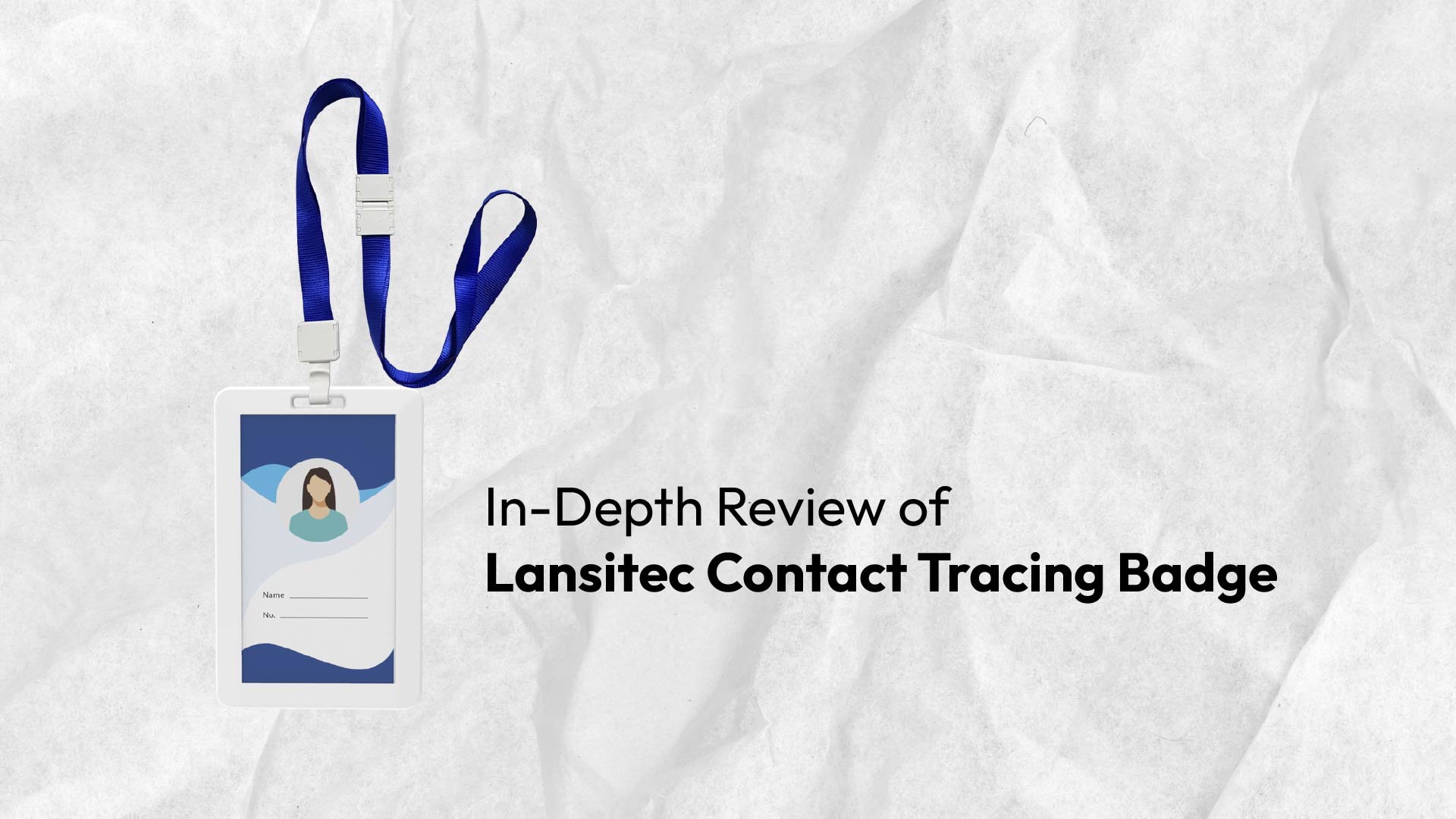
Análisis detallado de la insignia de rastreo de contactos de Lansitec
En una era en la que mantener la distancia social se ha vuelto fundamental, la credencial de rastreo de contactos de Lansitec surge como una solución sofisticada diseñada para mejorar la seguridad en los lugares de trabajo y los entornos de atención médica.

Sistema de seguimiento de activos y personal hospitalario con Lansitec
El seguimiento de los activos del hospital es un aspecto esencial de la gestión de las operaciones de las instalaciones del hospital. Le permite garantizar la disponibilidad de todos los activos y realizar un seguimiento de ellos si se producen averías inesperadas.
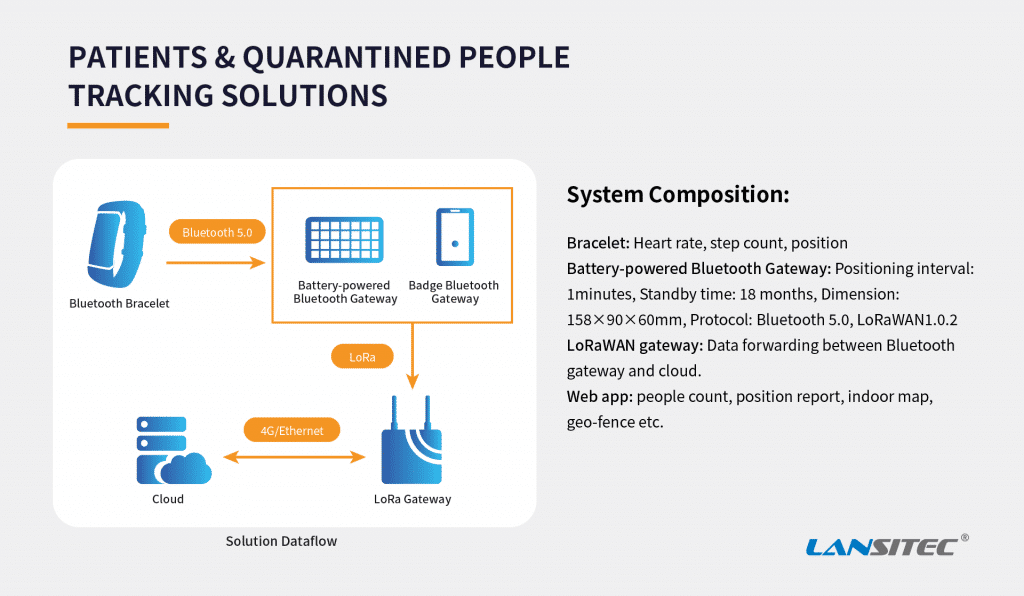
Soluciones de seguimiento de pacientes y personas en cuarentena
Esperamos que nuestra solución de seguimiento de pacientes nos ayude a todos a superar el coronavirus lo antes posible. #COVID2019 #IoT #Tracking Seguimiento de pacientes potenciales y confirmados


